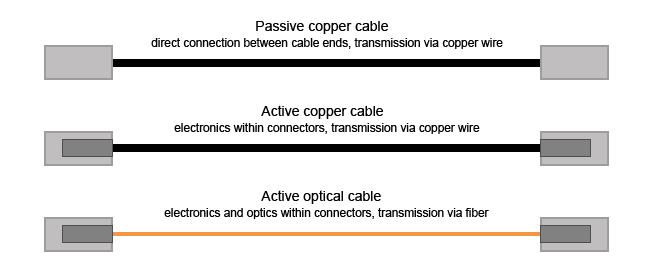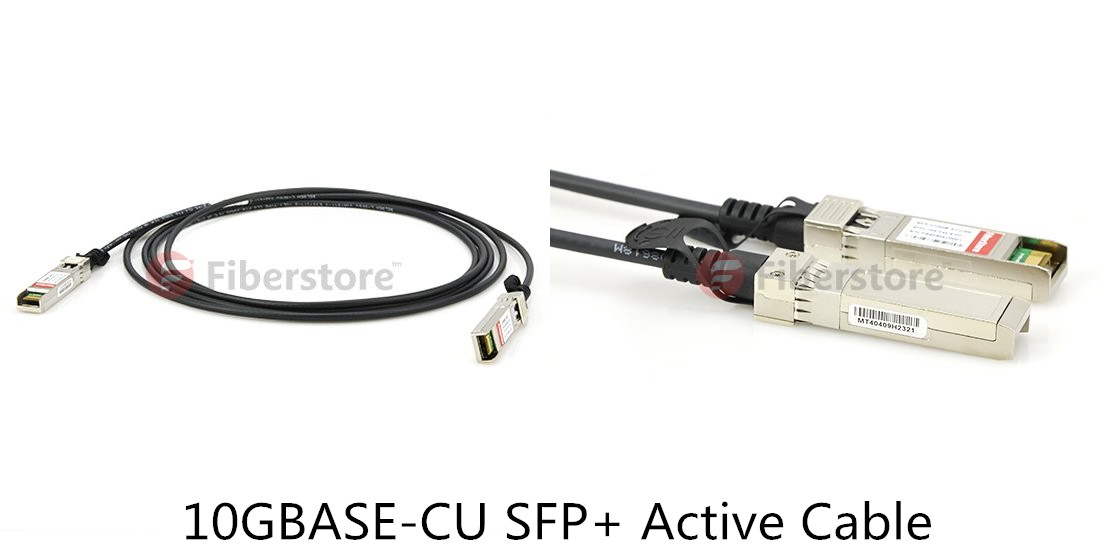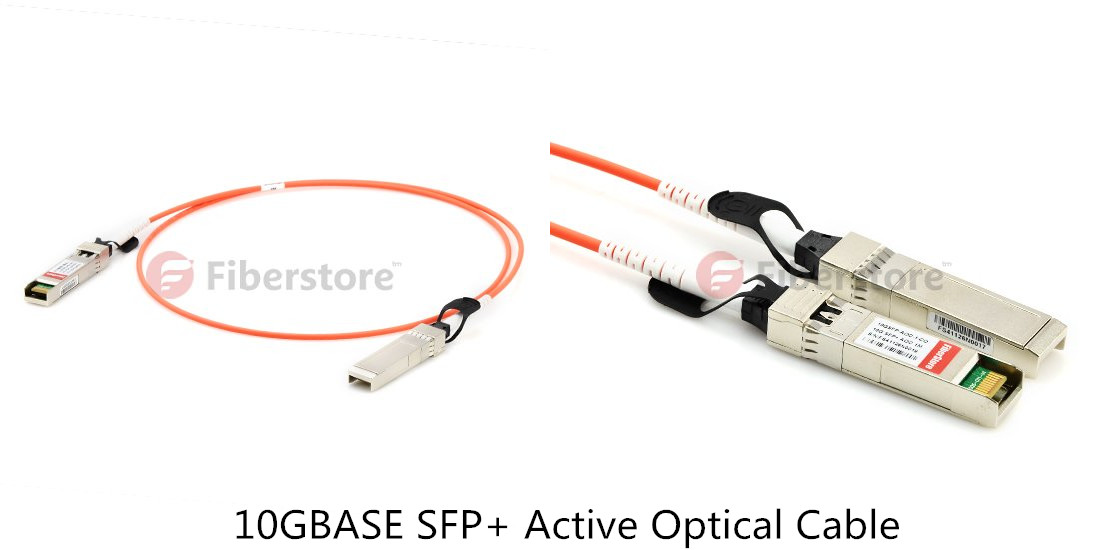As one kind of optical transceiver assembly, a direct attach cable (DAC) is used to connect one mobility access switch with another when forming a stack, which can be either passive or active. Since the passive DAC cable contains no active components, it provides a direct electrical connection between corresponding cable ends. This process can also be done by an active DAC cable that is considered active because there are optics and/or electronics embedded within the connectors. Active DAC vs. passive DAC: the active one helps to improve signal quality and provides a longer cable distance. The DAC cable is a fixed assembly that is purchased at a given length.
Seen from the material of the cable, DAC cable can be classified into direct attach copper cable and active optical cable (AOC). Direct attach copper cables can either be passive or active, while AOC cables are always active. The following figure shows leading types of passive and active cable for data center:

As two kinds of commonly-used transceiver assemblies, both direct attach copper cable and AOC cable have their advantages and disadvantages.
What Is DAC Cable?
As the development of fiber technology, someone may deem that copper technology is out of fashion. This is not true for direct attach copper cable. In fact, direct attach copper cable still has its advantages in the market.

- Advantages of Direct Attach Copper Cable
Enough data rate for various applications—Today’s direct attach copper cable can support higher data rates than traditional copper interfaces—from 4Gbps to 10Gbps per channel.
Interchangeability—As the development of copper cable technology, direct attach copper cable is interchangeable and hot swappable with fiber optic modules.
Cost effective—Supporting such multiple protocols as Gigabit & 10G Ethernet, 8G FC, FCoE and InfiniBand, direct attach copper cable is a cost effective solution over optical transceivers.
- Disadvantages of Direct Attach Copper Cable
The defect of direct attach copper cable is that it is heavy and bulky, making it difficult to be managed. Furthermore, due to the nature of electrical signals, direct attach copper cable is vulnerable to the effects of electromagnetic interference (EMI), such as undesirable responses, degradation, or complete system failure.
What Is AOC Cable?
AOC cable is an alternative to optical transceivers, which eliminates the separable interface between transceiver module and optical cable. It offers a number of advantages over direct attach copper cable.

- Advantages of AOC
Greater bandwidth—Needing no equipment upgrades, AOC cable has a throughput of up to 40 Gbps with QSFP+.
Lightweight—Due to its material, AOC cable weighs less than a comparable direct attach copper cable.
EMI immunity—Since the optical fiber is a kind of dielectric (not able to conduct electric current), AOC is immune to electromagnetic energy.
- Disadvantages of AOC
Compared with direct attach copper cable, the drawback of AOC cable is that it may be a little expensive for customers.
Conclusion
DAC cable and AOC cable are widely applied in storage area network, data center, and high-performance computing connectivity, etc. AOC vs. DAC: the correct choice can be made when you are clear about the advantages and disadvantages of each. Fiberstore provides various kinds of high speed interconnect DAC assemblies including 10G SFP+ Cables, 40G QSFP+ Cables, and 120G CXP Cables.
Related Article:
40G QSFP+ Direct Attach Copper Cables
Active Optical Cable (AOC) – Rising Star of Telecommunications & Datacom Transceiver Markets
